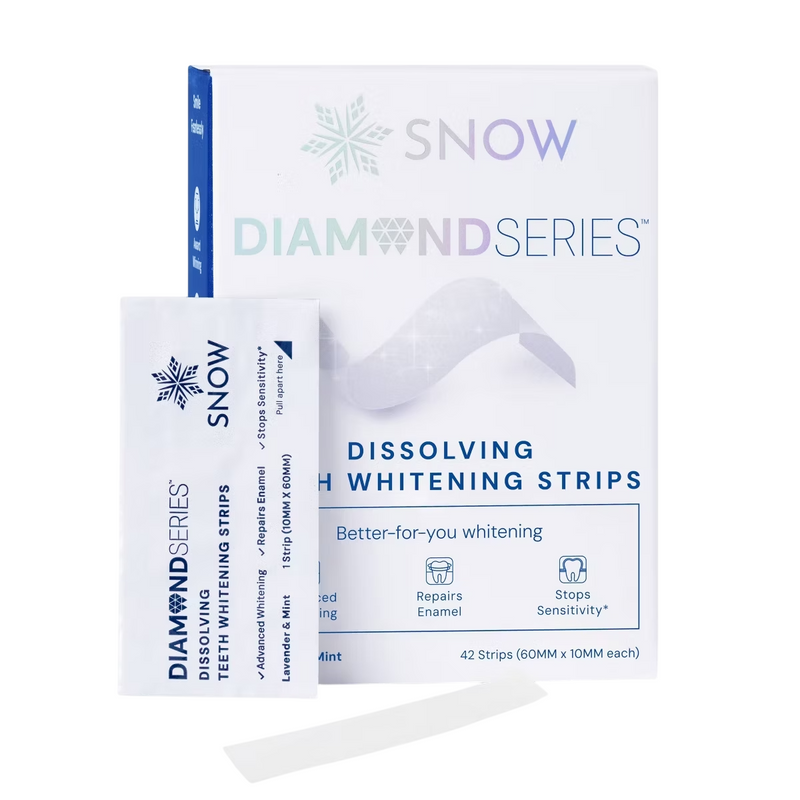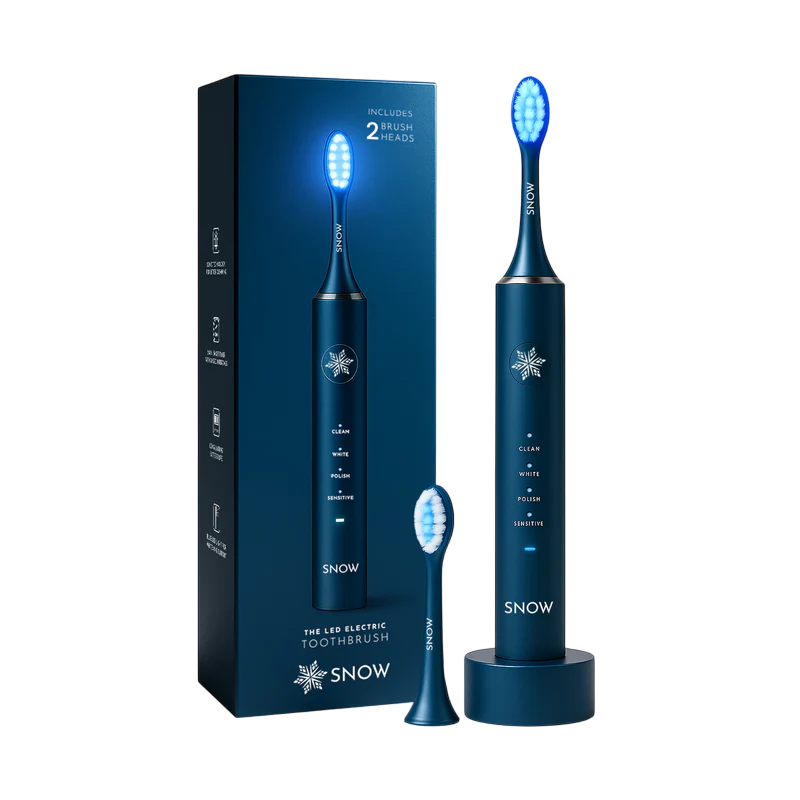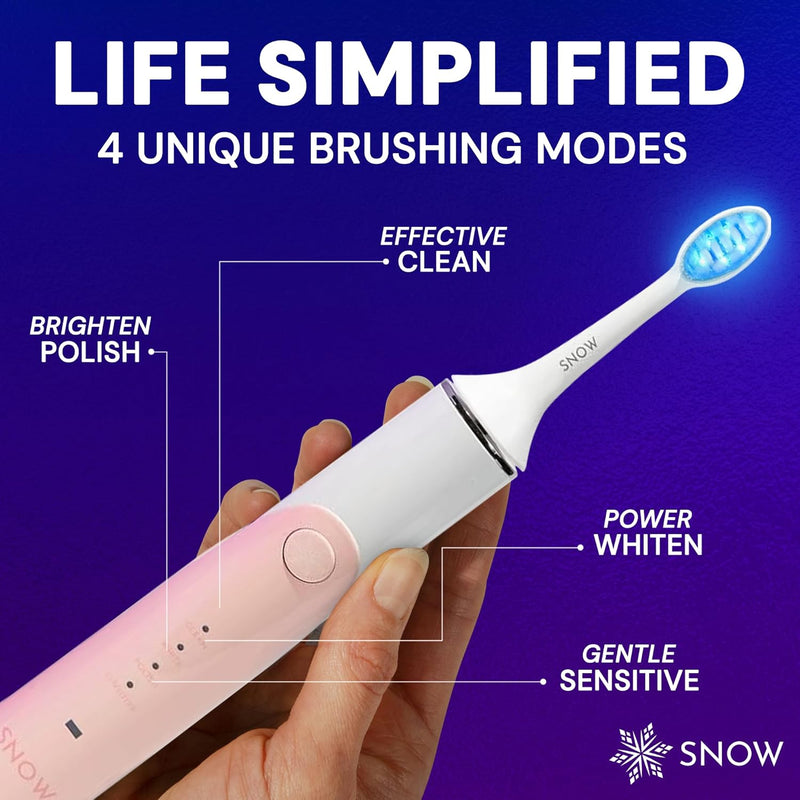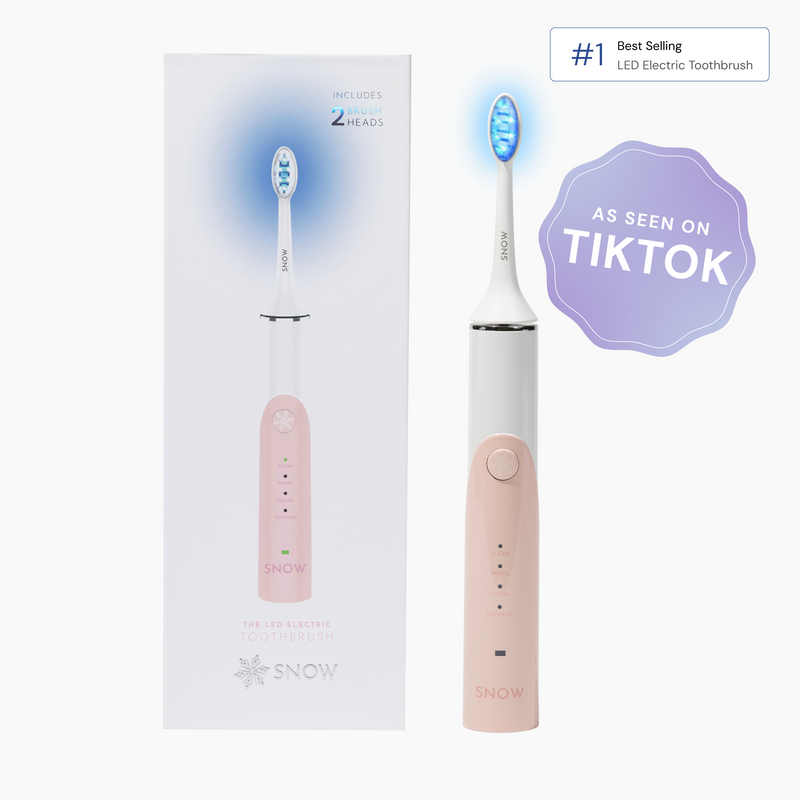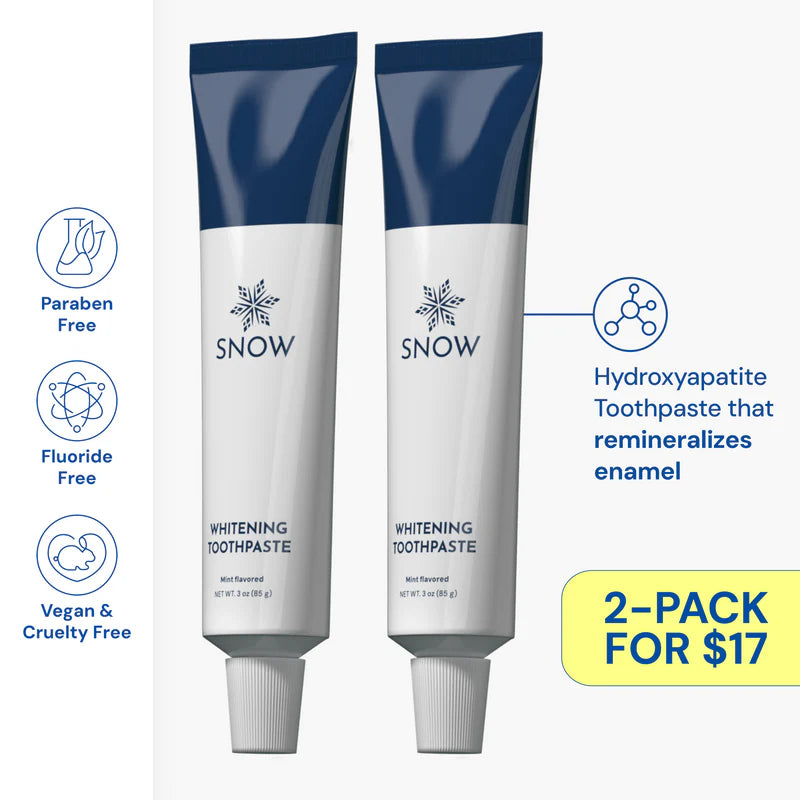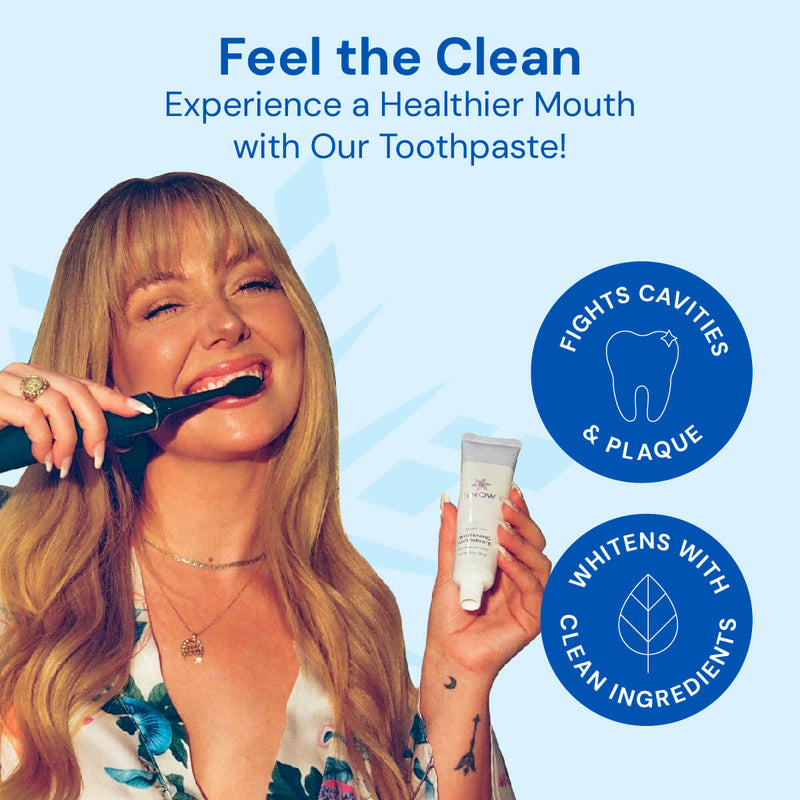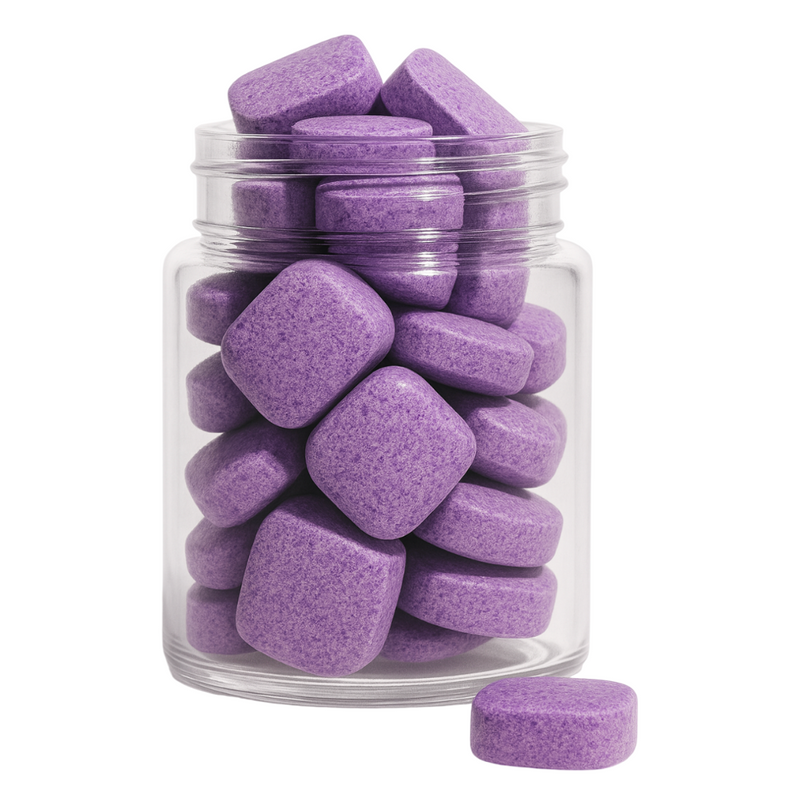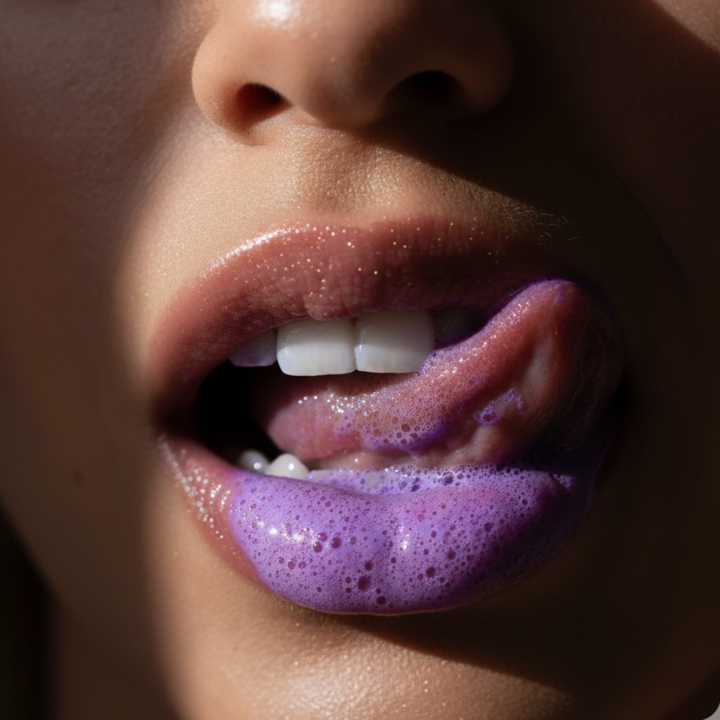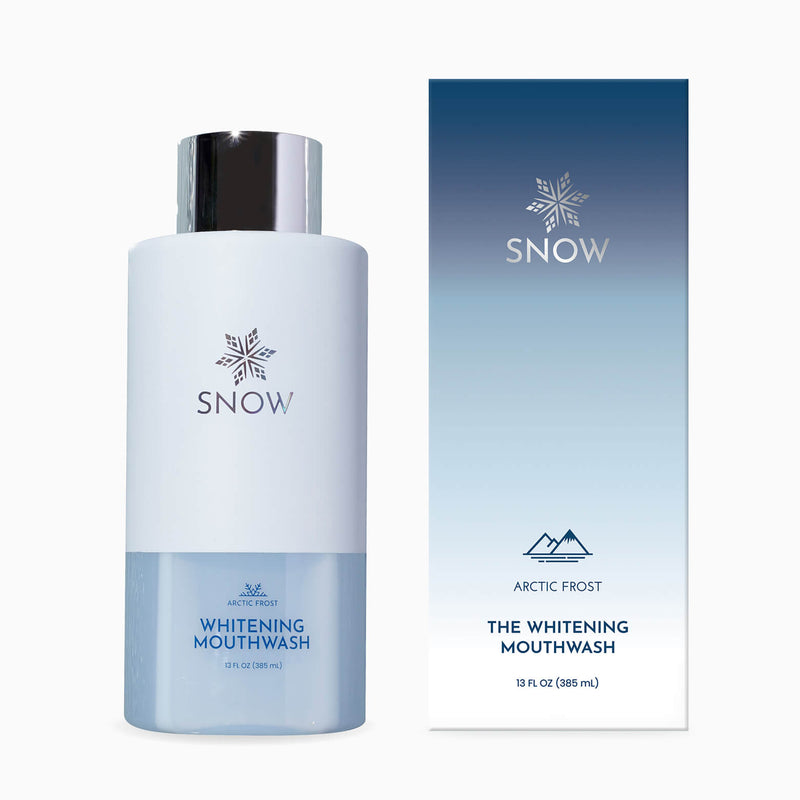Wondering does hydroxyapatite whiten teeth in a way that’s safe and effective? The answer is yes — but not in the way traditional bleaching agents do. Hydroxyapatite, a mineral naturally found in your tooth enamel, works by repairing tiny surface flaws and smoothing the enamel. This helps your teeth reflect light more evenly, giving them a naturally whiter appearance. In this article, we’ll dive into how it works, how it compares to common whitening methods, and why it's becoming a go-to for those seeking enamel-safe, science-backed results.
Key Takeaways
-
Hydroxyapatite is a natural mineral that strengthens tooth enamel and provides a gentle whitening effect by filling microscopic defects and enhancing surface smoothness.
-
Unlike traditional whitening methods that rely on harsh chemicals, hydroxyapatite promotes remineralization, reduces sensitivity, and offers a holistic approach to oral health.
-
Future research is needed to validate hydroxyapatite’s effectiveness through comprehensive clinical trial data, as well as to explore advanced formulations for enhanced whitening results.
Understanding Hydroxyapatite
Hydroxyapatite is a naturally occurring mineral — and it’s the same substance that makes up most of your tooth enamel and bones. Made from calcium and phosphate ions, it plays a crucial role in keeping teeth strong, smooth, and resilient.
Unlike traditional whitening agents that use chemical bleaches, hydroxyapatite works in harmony with your teeth, and exploring a comprehensive hydroxyapatite vs fluoride analysis reveals the distinct advantages of each approach for enamel health.
It reinforces enamel by filling in microscopic cracks and surface irregularities, which not only strengthens your teeth but also helps prevent sensitivity, decay, and erosion.
As it supports your body’s natural remineralization process, hydroxyapatite protects tooth structure while giving your teeth a visibly brighter, smoother appearance. It’s a gentle, enamel-safe way to whiten teeth while improving overall oral health — making it a standout ingredient in modern dental care products.
The Role of Hydroxyapatite in Tooth Enamel
So, how does hydroxyapatite interact with your enamel?
This biomimetic mineral enhances the strength and durability of enamel by binding to tiny surface flaws and reinforcing the structure from within. Since enamel is the hardest substance in the human body — even harder than bone — protecting it is key to long-term oral health.
When applied through toothpaste or mouthwash, hydroxyapatite particles fill in micro-defects in the enamel. This smooths the tooth’s surface, helping it reflect light more evenly — which gives teeth a naturally whiter, glossier look. Plus, smoother enamel is less likely to trap stains, plaque, or discoloration.
In short, hydroxyapatite doesn’t just whiten teeth — it rebuilds and protects them. By strengthening enamel and enhancing its natural sheen, this science-backed mineral offers a holistic, enamel-safe solution for healthier, brighter smiles.
How Hydroxyapatite Whitens Teeth
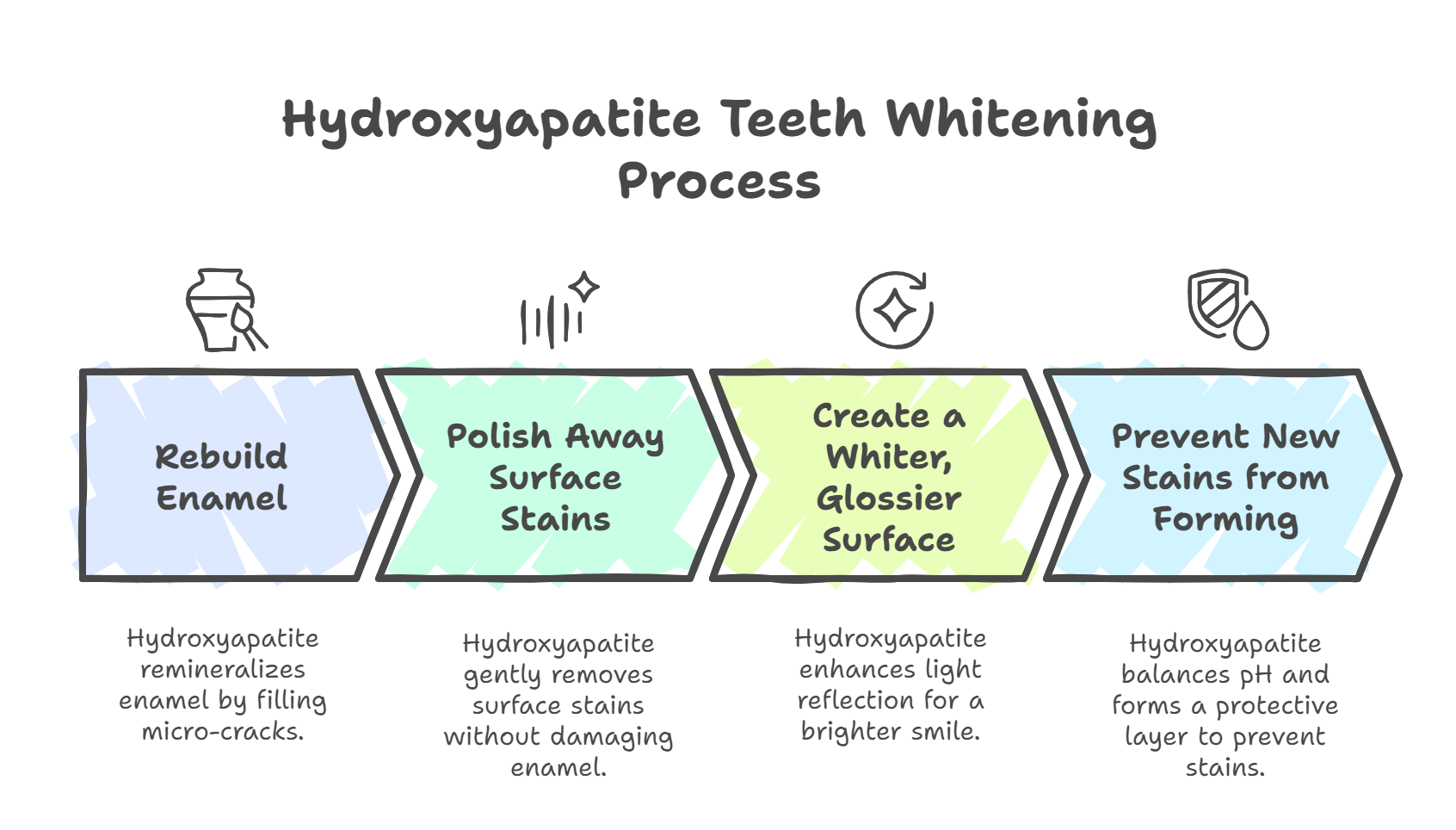
Looking for a gentle, effective way to whiten your teeth without harsh chemicals? Hydroxyapatite offers a science-backed, enamel-safe solution. Here’s how it works — and how you can use it to brighten your smile and strengthen your teeth at the same time.
1. Rebuild Enamel with Remineralization
One of the key ways hydroxyapatite whitens teeth is by remineralizing enamel — essentially restoring the minerals lost through diet, decay, or wear.
-
How it works: Hydroxyapatite mimics the natural structure of your enamel, filling in micro-cracks and restoring lost calcium and phosphate. This smooths the tooth surface, which reflects light more evenly — making your teeth appear whiter.
-
Nano-hydroxyapatite: Even more effective, nano-sized particles can penetrate deeper into enamel, promoting faster and more complete remineralization.
-
Bonus benefit: It can also reverse early signs of cavities and halt their progression — something traditional whitening agents can't do.
Studies show hydroxyapatite toothpaste can be as effective — or more — than fluoride in remineralizing early caries lesions.
2. Polish Away Surface Stains Safely
Hydroxyapatite has mild abrasive properties that help remove surface stains — without damaging your enamel like harsher abrasives can.
-
Gentle cleaning: It removes stains caused by food, drinks, and tobacco, acting like a polish to brighten your smile.
-
Better than traditional abrasives: Compared to ingredients like hydrated silica or sodium bicarbonate, hydroxyapatite offers effective stain removal with significantly less risk of enamel erosion
-
Consumer feedback: Many users report visibly whiter teeth after switching to hydroxyapatite toothpaste — especially with regular use.
3. Create a Whiter, Glossier Surface
By filling in tiny defects and creating a smoother enamel surface, hydroxyapatite enhances the natural glossiness of your teeth.
-
Light reflection: A smooth enamel surface reflects more light, which makes teeth appear shinier and brighter.
-
Smoother = cleaner: Smoother teeth trap less plaque and debris, reducing future discoloration and making daily oral hygiene more effective.
4. Prevent New Stains from Forming
Whitening isn’t just about removing stains — it’s also about stopping them before they start.
-
Balancing pH: Hydroxyapatite helps maintain a healthy oral pH, which prevents acid erosion and the kind of enamel softening that leads to stains.
-
Protective layer: It leaves a protective mineral layer on the teeth, making them more resistant to discoloration from coffee, wine, or acidic foods.
Scientific Studies on Hydroxyapatite for Teeth Whitening and Oral Health
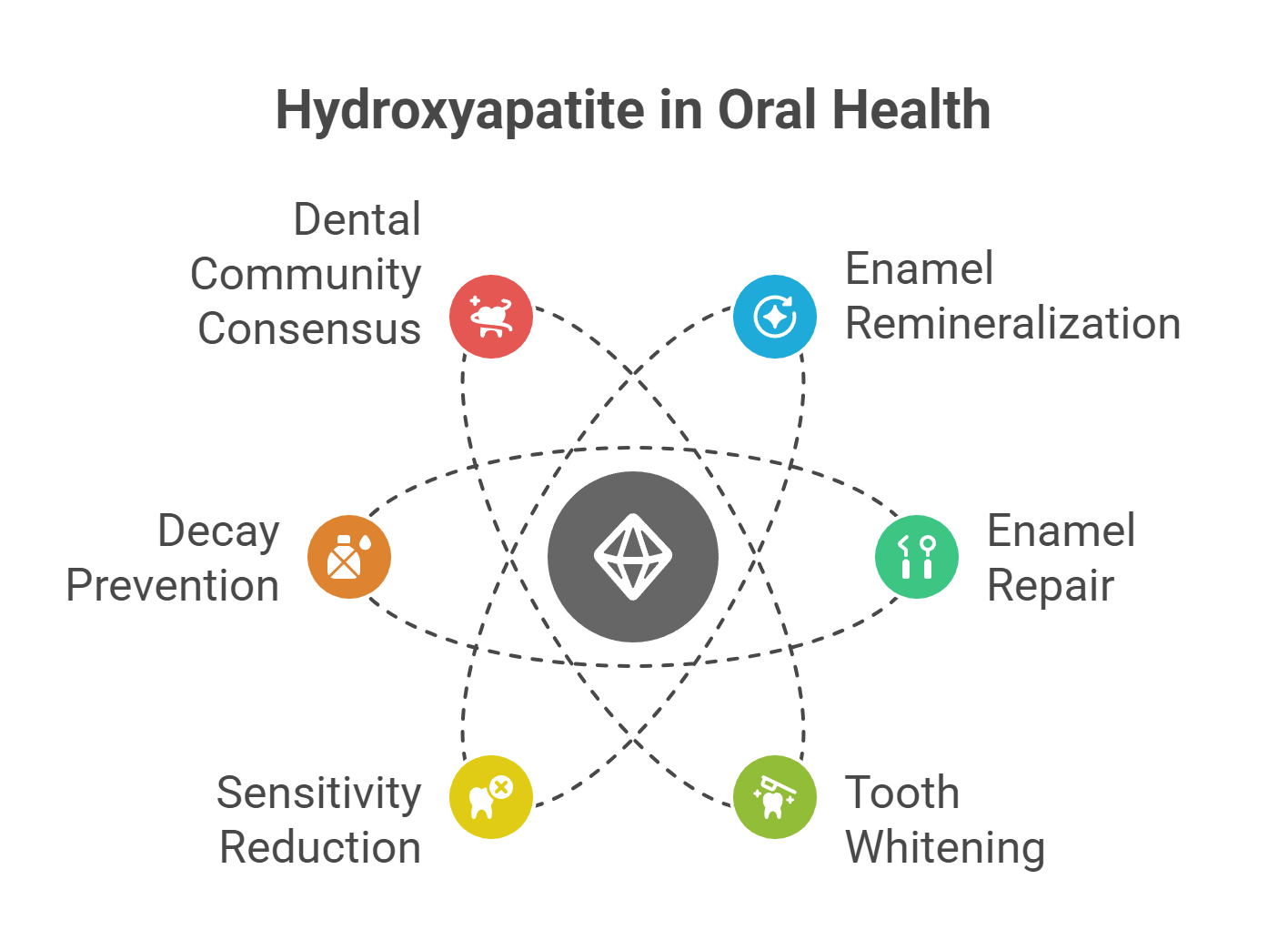
Hydroxyapatite is one of the most studied natural minerals in dental science. Research consistently shows that it can help whiten teeth, rebuild enamel, reduce sensitivity, and prevent tooth decay — all without the harsh effects of peroxide-based whiteners.
This section breaks down the evidence behind its benefits and explains why hydroxyapatite is becoming a trusted ingredient in modern oral care.
How Hydroxyapatite Works: What the Research Shows
Both in vitro (lab) and in vivo (real-world) studies have found that hydroxyapatite offers several proven oral health benefits:
-
Remineralizes tooth enamel by replacing lost calcium and phosphate
-
Repairs microscopic enamel defects to strengthen the tooth surface
-
Creates a smoother, glossier enamel layer that reflects more light, enhancing natural whiteness
-
Reduces tooth sensitivity by sealing exposed dentin
-
Provides protection against decay caused by acidic foods and daily wear
Nano-hydroxyapatite, in particular, is even more effective at penetrating enamel and dentin, delivering deeper remineralization and visible whitening results.
Key Research Supporting Hydroxyapatite
Several published studies have demonstrated hydroxyapatite’s effectiveness in both whitening and protecting teeth:
BMC Oral Health Journal
A clinical study found that toothpaste containing nano-hydroxyapatite significantly improved tooth whiteness while reducing sensitivity. Participants noticed visibly brighter smiles and less discomfort, making it a safer alternative to chemical bleaching agents.
Journal of Dental Research
This study confirmed that hydroxyapatite nanoparticles helped remineralize enamel and prevent early-stage cavities. Regular use of hydroxyapatite toothpaste led to mineral restoration and increased enamel strength.
Other Findings
Across multiple peer-reviewed journals, hydroxyapatite is shown to offer lasting protection against demineralization and tooth surface damage — benefits not offered by most peroxide-based whitening solutions.
Dental Community Consensus
Hydroxyapatite is gaining traction among dentists and oral care professionals for its ability to support long-term enamel health while whitening teeth naturally:
-
Many dentists and dental hygienists now recommend hydroxyapatite toothpaste to patients with sensitive teeth, enamel erosion, or early decay.
-
Its biomimetic action (mimicking the natural composition of enamel) makes it especially suitable for holistic or minimally invasive dentistry.
-
While peroxide whitening remains popular for fast results, hydroxyapatite is seen as a safer, more sustainable option for daily use.
As more clinical research emerges, hydroxyapatite is being recognized as a key ingredient in preventive dentistry — offering both aesthetic and structural benefits without compromising enamel.
Hydroxyapatite vs. Traditional Whitening: Which Is Better for Your Teeth?
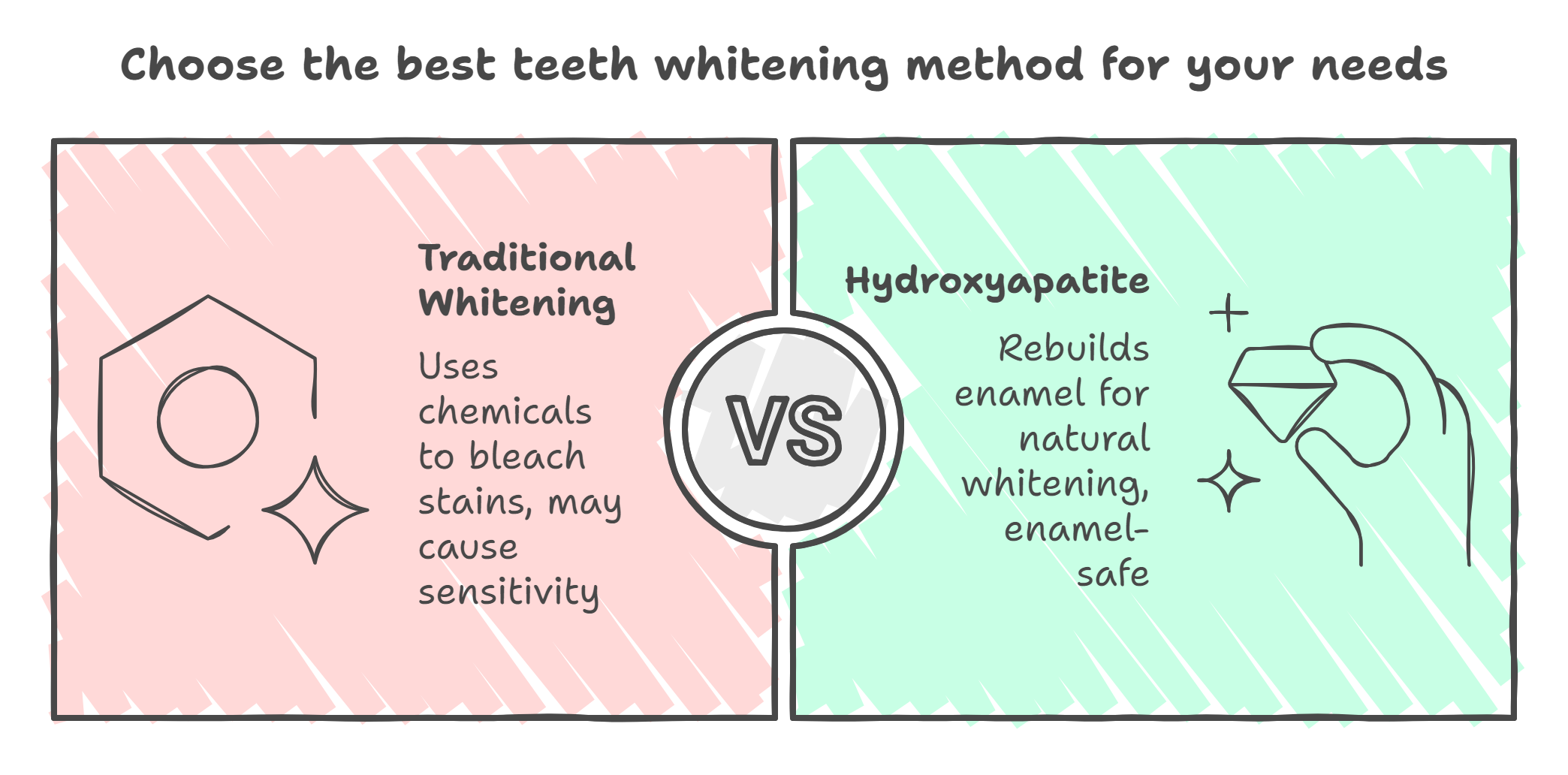
When comparing hydroxyapatite with traditional teeth whitening methods like hydrogen peroxide or abrasive pastes, several key distinctions emerge. While both aim to whiten teeth, they work in very different ways — and produce different side effects.
Hydroxyapatite offers a non-oxidizing, enamel-safe alternative that whitens teeth by rebuilding and smoothing enamel, not bleaching it. This makes it especially appealing for people with sensitive teeth or those seeking a more holistic, long-term solution.
How Whitening Methods Work
-
Traditional Whitening Agents: Most conventional whitening products use peroxide-based chemicals (like hydrogen or carbamide peroxide) to oxidize stains on the tooth surface. While effective, this process can erode enamel and increase tooth sensitivity over time.
-
Hydroxyapatite: Instead of chemically bleaching stains, hydroxyapatite works by remineralizing enamel and filling in microscopic surface defects. This creates a smoother, glossier surface that reflects light more evenly — resulting in naturally whiter-looking teeth without damaging the enamel.
This marks a shift toward biomimetic, enamel-friendly whitening, where the goal is to restore tooth structure rather than chemically alter it.
Safety and Sensitivity
One of the biggest drawbacks of peroxide-based whiteners is the risk of tooth sensitivity, gum irritation, and enamel thinning. This is especially common with repeated or improperly administered treatments.
Hydroxyapatite, on the other hand, is a naturally occurring, biocompatible mineral. It doesn’t irritate the soft tissues of the mouth and is safe for daily use. In fact, regular application helps:
-
Seal exposed dentin
-
Reduce post-whitening sensitivity
-
Strengthen enamel against future damage
This makes hydroxyapatite ideal for long-term oral care and safer whitening, especially for individuals prone to sensitivity.
Long-Term Whitening Effects
Hydroxyapatite may not produce immediate or dramatic whitening like peroxide-based products, but its results are gentler, more sustainable, and come with added oral health benefits. Over time, users can expect:
-
Gradual brightening of natural tooth color
-
Reduction in surface stains
-
Smoother, glossier enamel
-
Decreased risk of sensitivity and enamel erosion
Clinical and customer reports show that after 30 seconds of brushing, hydroxyapatite toothpaste outperformed blue covarine toothpaste in stain removal — all without the harsh chemicals.
Here’s a quick comparison of hydroxyapatite toothpaste and traditional whitening methods to help you understand the differences at a glance.
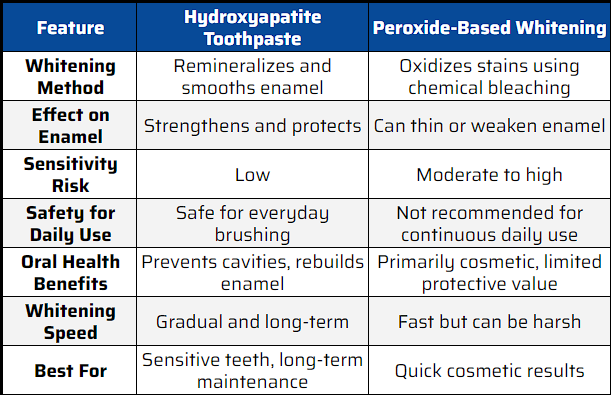
Clinical Applications and Formulations of Hydroxyapatite Toothpaste
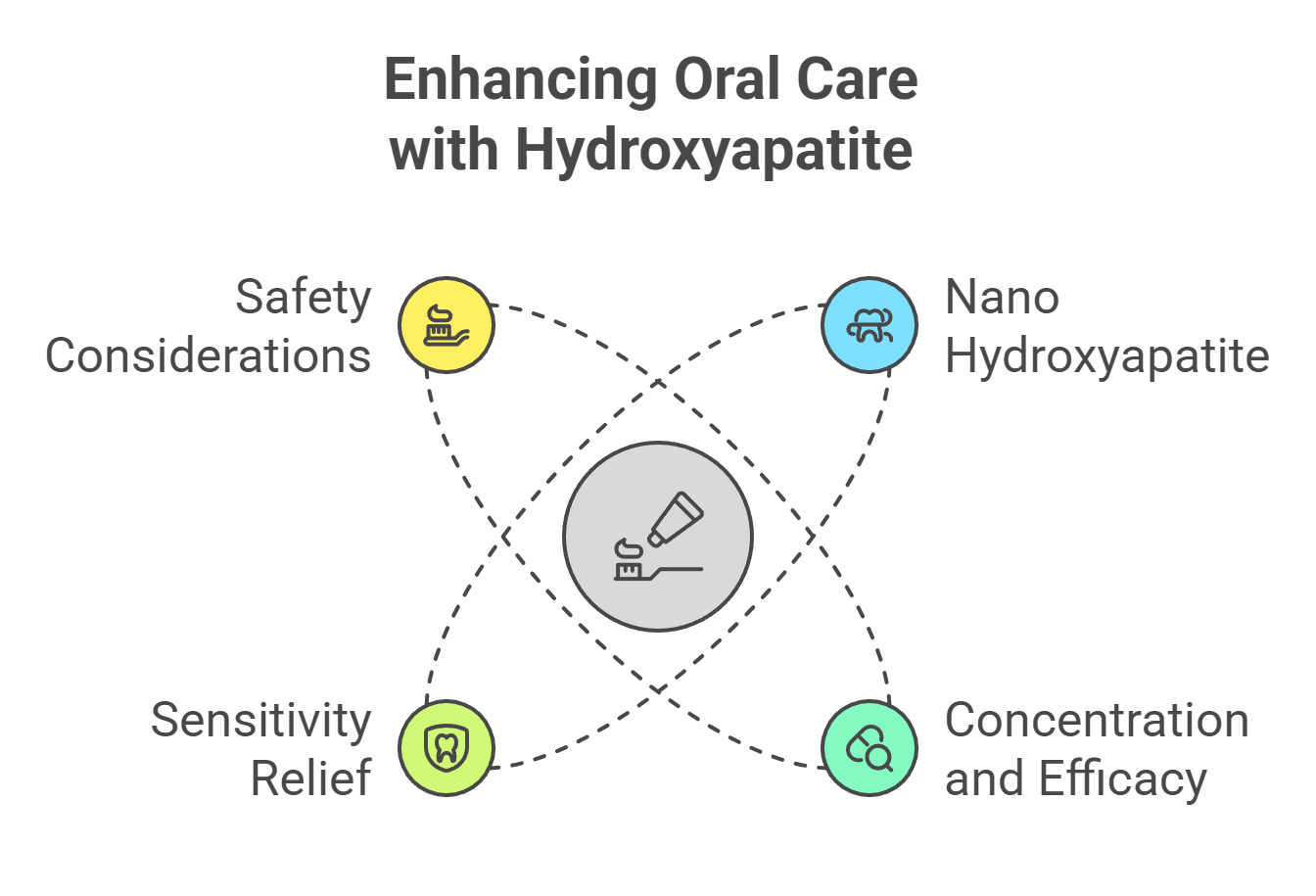
Hydroxyapatite toothpaste comes in various formulations, each designed to enhance its whitening properties and overall effectiveness.
Parents seeking effective oral care for their children often look for toothpaste options that provide both safety and proven results.
One such option is hydroxyapatite toothpaste for kids, which is formulated to gently remineralize young teeth while avoiding harsh chemicals.
This toothpaste type supports enamel repair and strengthens teeth, making it suitable for daily use by children of all ages. In comparison to traditional whitening agents, hydroxyapatite offers a gentle, non-toxic solution.
Now, let’s examine the specific types of hydroxyapatite toothpaste, starting with nano hydroxyapatite toothpaste, which has shown promising results in teeth whitening.
Nano Hydroxyapatite Toothpaste
Nano hydroxyapatite toothpaste can provide a protective layer on teeth, enhancing their whiteness over time. Key points include:
-
Users typically experience a satisfying post-brushing whitening effect with nano hydroxyapatite toothpaste.
-
The impact of concentration on whitening performance has been investigated.
-
Higher concentrations can lead to better whitening results.
Specifically, more enamel surfaces were covered with 10 wt% nano hydroxyapatite toothpaste compared to a 1 wt% formulation, highlighting the importance of concentration in achieving optimal whitening effects.
Products like the Himalaya Botanique Whitening Toothpaste, which contain nano hydroxyapatite and tooth whitening products, are designed to leverage these benefits for a brighter smile. Additionally, using nano hap toothpaste can enhance your oral care routine.
Concentration and Efficacy
Examining the impact of various concentrations of nano hydroxyapatite in toothpaste formulations can provide insights into optimal effectiveness. Future research should focus on identifying the ideal concentration that maximizes whitening benefits while ensuring safety for daily use.
Suitable for Sensitive Teeth
Hydroxyapatite toothpaste is particularly suitable for individuals with sensitive teeth and offers protective benefits. It works by forming a protective layer over exposed dentin, thereby reducing tooth sensitivity and discomfort. This makes hydroxyapatite an excellent alternative to traditional whitening methods that often cause irritation and increased sensitivity.
Unlike fluoride toothpaste, hydroxyapatite is less irritating and does not cause the teeth sensitivity commonly associated with peroxide-based whitening systems. Filling microscopic gaps in enamel and dentin, hydroxyapatite offers notable relief for those with dentin hypersensitivity, making it a gentler and safer option for maintaining a bright smile. Additionally, fluoride toothpaste reacts with saliva to create fluorapatite, which helps prevent tooth decay. However, fluoride overconsumption, especially in children, can lead to dental fluorosis and toxicity, making hydroxyapatite a safer alternative for daily use in some cases.
Limitations and Considerations of Hydroxyapatite Toothpaste
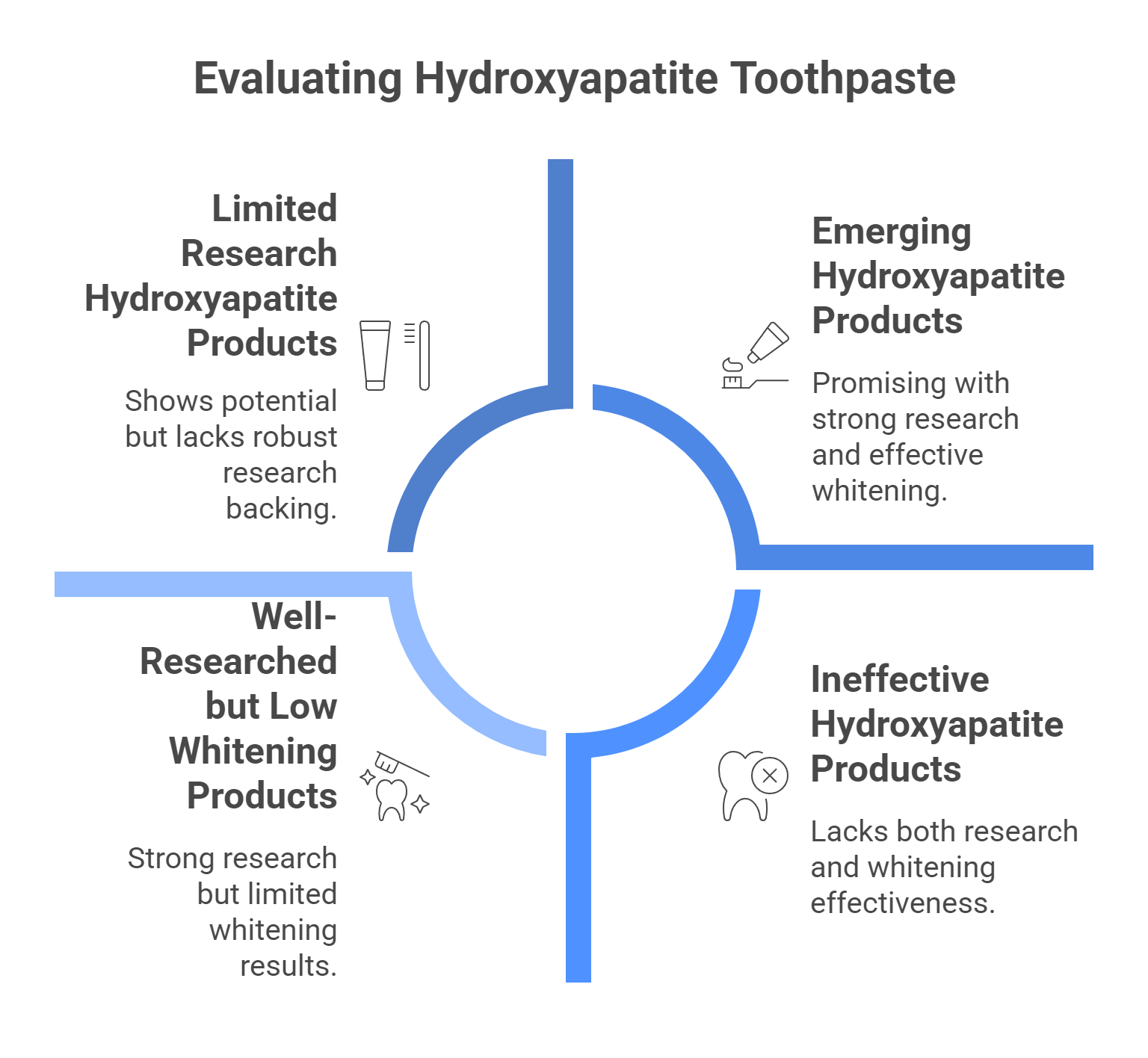
While hydroxyapatite offers many proven benefits for tooth remineralization and enamel-safe whitening, it’s important to be aware of its current limitations. As with any emerging oral care ingredient, there are still areas where more research is needed — and where user expectations should be managed.
Current Research: Promising but Still Developing
Most of the available research on hydroxyapatite’s whitening effects is based on in vitro studies (laboratory settings) and a few small-scale clinical trials. These studies are promising, especially when it comes to enamel repair and stain removal — but they don’t yet match the large body of evidence that exists for traditional whitening agents like fluoride or peroxide.
-
Twelve out of thirteen in vitro studies using the QUIN Quality Assessment Tool reported a low risk of bias
-
However, very few high-quality, large-scale clinical trials have been completed to confirm these whitening results in everyday use
More randomized controlled trials (RCTs) are needed to fully validate hydroxyapatite’s long-term effectiveness as a whitening agent.
Realistic Whitening Expectations
Hydroxyapatite whitens teeth by restoring enamel and creating a smoother, more reflective surface — not by bleaching. This means:
-
Whitening will be gradual, not instant
-
Results will vary based on your natural enamel color and lifestyle habits
-
It’s best for maintaining and enhancing natural whiteness, rather than dramatic shade changes
Consumers seeking fast, visibly dramatic results may still prefer peroxide-based products. But for those focused on long-term oral health and gradual improvement, hydroxyapatite is a reliable and gentler choice.
Choosing the Right Product
To get the best results from hydroxyapatite toothpaste, it’s important to choose a product that:
-
Clearly discloses the concentration of hydroxyapatite
-
Contains minimal or no harsh chemicals
-
Is formulated for your specific needs (e.g., sensitivity, stain removal, cavity prevention)
Product transparency is key. Look for clinical backing, full ingredient lists, and brand reputation to ensure you’re getting a formulation that delivers on its claims.
While hydroxyapatite may not offer rapid whitening like peroxide-based methods, its benefits extend far beyond appearance. It’s a biocompatible, enamel-rebuilding ingredient that strengthens teeth, reduces sensitivity, and helps prevent cavities — all while providing a gentle whitening effect over time.
As research continues to evolve, hydroxyapatite remains one of the most promising innovations in holistic oral care — but consumers should approach it with informed expectations and an understanding of its current scientific support.
Future Research Directions
Advancing research in the area of hydroxyapatite’s whitening effects is vital for both consumer guidance and dental health. Future research could focus on conducting high-quality clinical trials to assess the whitening benefits of hydroxyapatite and explore innovative combinations of ingredients to enhance its effectiveness.
Advanced Formulations
Combining hydroxyapatite with other active compounds in toothpaste may improve its whitening effects. Research may explore the synergy between hydroxyapatite and other active ingredients for improved whitening outcomes, potentially leading to more effective and versatile toothpaste formulations.
Advanced formulations in oral care include innovative combinations of ingredients that aim to improve effectiveness, particularly in teeth whitening. By exploring new ingredients and optimizing existing ones, future research can enhance the efficacy of hydroxyapatite toothpaste, ensuring it meets the needs of a diverse range of users.
Summary
Hydroxyapatite offers a new approach to whitening — one that works by strengthening and rebuilding enamel, not stripping it away. Backed by growing scientific support, it helps smooth enamel, lift stains naturally, and protect against sensitivity. While results are gradual, the long-term benefits to your smile make it a smart alternative to peroxide-based products.
If you're exploring a whitening option that’s as gentle as it is effective, SNOW’s hydroxyapatite toothpaste is a great place to start.
Try SNOW today and experience a cleaner, safer way to whiten — without compromising your enamel.
Frequently Asked Questions
How does hydroxyapatite toothpaste whiten teeth?
Hydroxyapatite toothpaste whitens teeth by remineralizing enamel, effectively removing stains and preventing new ones from adhering, while also enhancing glossiness and hardness. This multifaceted approach strengthens your teeth and leads to a brighter smile.
What is hydroxyapatite?
Hydroxyapatite is the primary inorganic mineral found in human teeth and bones, composed of calcium and phosphate ions. This essential component plays a critical role in maintaining bone density and dental health. Studies suggest that fluoride is effective in reducing caries by integrating into tooth enamel.
Is hydroxyapatite toothpaste safe for daily use?
Hydroxyapatite toothpaste is safe for daily use and effectively helps remineralize tooth enamel while strengthening teeth and preventing decay.
What are the benefits of using hydroxyapatite toothpaste?
Using hydroxyapatite toothpaste can effectively reverse early tooth decay, strengthen enamel, remove surface stains, and enhance the overall glossiness and hardness of your teeth. This leads to improved oral health and a brighter, more resilient smile.
How does hydroxyapatite compare to fluoride in toothpaste?
Hydroxyapatite forms a protective layer on teeth, while fluoride creates fluorapatite through interaction with saliva. Both ingredients are effective in cavity prevention, offering complementary benefits for oral health.

















































